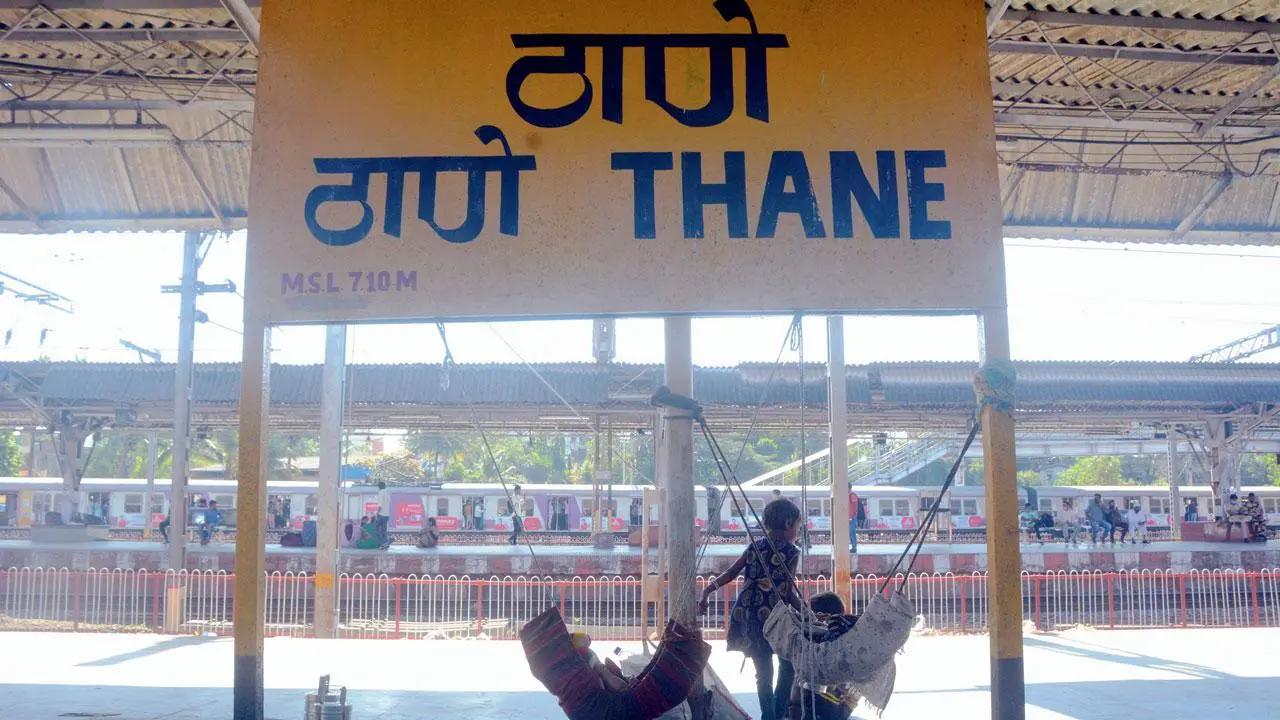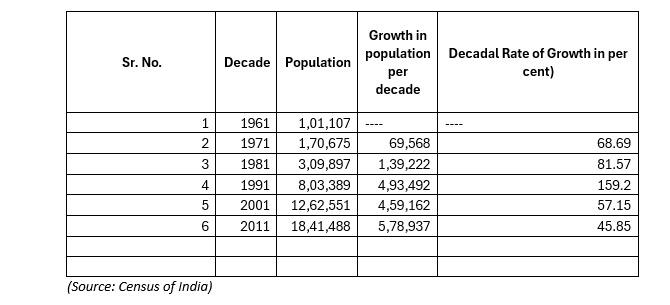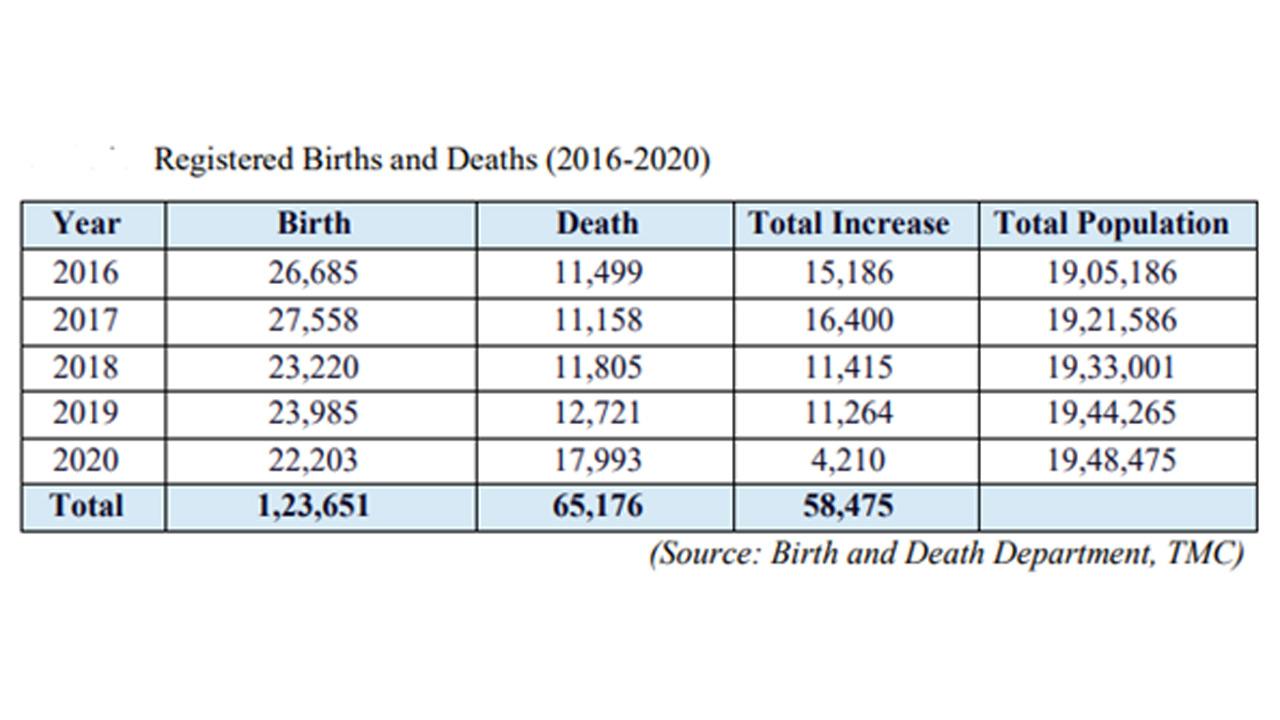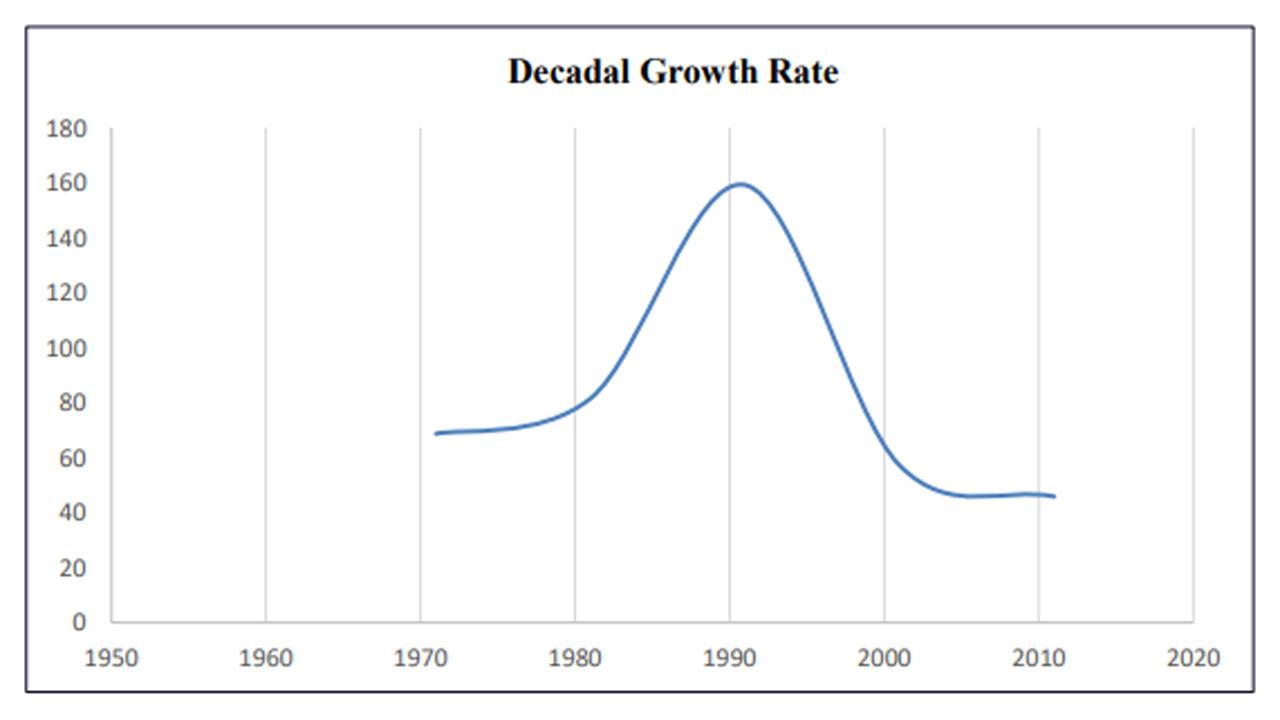Is Thane city at risk of losing its ‘Lake City’ title? Experts highlight gridlocked traffic, unaffordable housing, shrinking green cover, and worsening air quality amid booming mega infrastructure projects

File Pic
Thane’s rapid urban expansion is pushing the city to its limits—traffic snarls, deteriorating air quality, environmental degradation, infrastructure strain, and deepening inequality—all chipping away at its livability. Once a tranquil ‘City of Lakes,’ Thane now mirrors Mumbai’s urban chaos, with key junctions such as Majiwada, Teen Haath Naka, and Ghodbunder Road choked daily, commute times doubling, and pollution levels soaring due to relentless construction and vehicular emissions. For lifelong residents, especially those in their 70s and 80s, Thane is now unrecognisable.—a city where green cover has made way for concrete, and open spaces have been consumed by towering high-rises.
Activists warn that without stricter environmental regulations, expanded sewage treatment, and mandatory afforestation, the city’s ecological balance will be lost. In a profound yet undeniable sense, Thanekars find themselves ensnared in a relentless maze of concrete. The push for urban forests in every ward, stricter builder accountability, and an independent tree committee reflects growing concerns that infrastructure projects must align with sustainability.
While authorities push infrastructure projects such as metro expansions, electric buses, and road widening, residents argue that piecemeal solutions cannot undo years of unchecked urban sprawl.
The question now looms large: Is Thane’s development truly improving the quality of life, or is it a real estate-driven illusion?
Thane’s explosive growth: Population doubles in a decade
According to the data from the Thane Municipal Corporation (TMC), the city’s population surged to 3,6,22,401 in 2021. The Majiwada-Manpada Prabhag Samiti recorded the most significant growth, with its population rising dramatically from 2,23,027 in 2011 to 7,46,502 in 2021.
According to the Chief Electoral Officer, Maharashtra, Ovala-Majiwada records the highest number of electors at 5,45,110, as per the electoral data report dated October 30, 2024. Thane constituency comes next with a total of 3,78,207 electors, followed by Kopri Panchpakhadi at 3,39,526.
Thane city covers an area of 128.23 sq.km with a population of 18.41 lakh as per the census 2011, positioning it as one of the 18 urban centers within the Mumbai Metropolitan Region. According to the Census data, the city’s population stood at 1,8,41,488 in 2011, with an average annual growth rate of 4.42 per cent between 2001 and 2011.
As per the census 2001, the population was 12.61 lakh, which shows that Thane’s population has grown rapidly over the decades (45 per cent growth between 2001 and 2011). Its total share of in the population in of MMR is 8.08 per cent. Of the total 12.61 lakh, 9.45 lakh people are found to be settled in unauthorised settlements. The gross population density is 144 ppha . The average literacy rate is 89.41 per cent and the average household size is five. The maximum decadal growth was observed during the decade of 1981-1991.

The rapid development has led to increased population density, straining infrastructure, and altering the lake city's natural charm of its 35 lakes. Speaking on the issue, Shiv Sena Member of Parliament (MP) Naresh Mhaske said, “The simplicity and serenity once synonymous with Thane city remain an integral part of its essence, undiminished by its rapid urban transformation. The roads are improving, top-tier schools are being established, greenery and gardens flourish, and development is at its peak. So, what’s the criticism really about?”

"I’m seeing Thane’s evolution and transformation for more than a decade. Its infrastructure projects are really unprecedented. Fundamentally, a city must move its people between homes and workplaces fast, conveniently and affordably. This is where the focus has been. With this and housing projects - clusters, redevelopments and SRA (Slum Rehabilitation Authority) projects - - Thane is doing all that’s possible, " opined Aseem Gupta, Additional Chief Secretary of the Urban Development Department, Government of Maharashtra.

Declining tree cover: Is the city losing its green lungs?
Thane recorded 1,329 cases of permanent loss and damage to trees in 2024, marking the highest number in five years. This alarming figure has drawn attention from environmental activists, who are questioning the local municipal administration's efforts in conserving the city's vital green cover and natural oxygen providers.
Data from the Regional Disaster Management Cell (RDMC) highlights the escalating threat to Thane's green cover. In 2023, 469 trees were uprooted, 205 trees suffered permanent damage, and 466 branch fall incidents occurred, totaling 1,140 cases of tree loss and damage. Comparatively, last year saw 676 trees uprooted, 168 permanently damaged, and 485 branch falls, emphasising the persistent vulnerability of the city's trees to natural events like heavy rains and strong winds.
Yasin Tadvi, Chief of the Regional Disaster Management Cell of the TMC, said, “Yes, there has been an increase in tree fall incidents in Thane, primarily attributed to concretisation and climate change, which have created unsuitable conditions for trees. Emphasis should be placed on planting trees, ensuring that for every tree cut for development projects like roads, metros, or housing, 10 new trees are planted in advance. We will have 100 trees even before the work of construction projects are completed. Although tree plantation plans are documented, implementation remains lacking. However, it is just not the responsibility of the civic corporation. I would urge Thanekars to initiate tree-planting movements, which the corporation can support to restore environmental balance.”
Is Thane City at Risk of Losing Its ‘Lake City’ Title? Experts highlight gridlocked traffic, unaffordable housing, shrinking green cover, and worsening air quality amid booming mega-infrastructure projects.
— Mid Day (@mid_day) February 21, 2025
Via: @poonammidday #Thane #Housing #Mumbai #realestate… pic.twitter.com/dP11goIGro
According to Stalin D, environmentalist and director of non-governmental organization (NGO) Vanashakti, "Thane has seen a spurt in construction and upgrading. And the urban infrastructure has been growing but at the cost of the green spaces.
“Traffic issues are terrible with endless jams all over the city. Air quality is very bad. The worst impact is due to mismanagement of solid waste. All of the unsegregated waste is being carried to nearby Bhiwandi and is dumped on the wetlands in CRZ. Diva-Mumbra are witnessing tremendous illegal constructions. Almost 3000 illegal slums have sprouted in CRZ areas. The lakes are being concretised and turned into water tanks. Mindless development or construction is underway. Sooner or later the city will witness unimaginable flooding... wait and watch,” said Stalin.
“Air pollution is worsening due to the continuous smoke emissions from the Diva Dumping ground. Also, the Anjur Dive construction sites do not use sprinklers and the dust emissions are very high,” he added.
To prevent disasters and to make rescue and relief efforts more effective, the Regional Disaster Management system operates 24x7, with three shifts of staff. In Thane city, the primary responsibility of the department is to promptly reach the site of any natural or man-made disaster and carry out rescue and relief operations. From the onset of the monsoon season until its end, additional manpower and equipment are arranged under the Regional Disaster Management system. These resources are also made available to ward offices of the TMC to address any emergencies.
Thane Disaster Response Force (TDRF) operating under the Disaster Management system, is equipped to respond to any disasters in Thane city and district. Team members carry out rescue and relief operations during emergencies.
A team from the National Disaster Response Force is stationed in Thane city from July 15 to the end of August during the monsoon season. This ensures that rescue and relief operations in Thane city and district can be carried out more effectively in case of any natural or man-made disasters.
Rohit Joshi, president of Yeoor Environmental Society, said, “Thane, once known for its lush greenery and natural ecosystems, is facing a severe environmental crisis. Rapid urbanisation, unchecked development, and poor environmental governance have led to alarming levels of deforestation, pollution, and habitat destruction.”
Joshi ascertains that Thane’s tree cover has been depleting at an unprecedented rate, primarily due to infrastructure projects and real estate development. A glaring example is the Metro- 4 project, which alone displaced approximately 3,000 trees, relocating them 35 km away from the city.
“Recent data indicates that the number of trees collapses in Thane has reached the highest level in a decade. Experts attribute this to multiple factors: concretisation around tree basins, restricting root growth and water absorption, excessive artificial lighting disrupting tree health, unscientific pruning and trimming practices and a lack of qualified environmental experts in the city’s Tree Authority,” he informed.
Mhaske presented a strong defence of Thane’s urban growth, emphasising its transformation from a village into a smart city. He acknowledged challenges such as green cover loss but argues that such issues are common in developing cities. He also highlighted Thane’s rising desirability, citing improved infrastructure and rent hikes as indicators of progress.
“Thane is not a planned city like Pune, Pimpri-Chinchwad. Thane, evolved from a village into a thriving smart city. We cannot run over the houses of owned properties. While development is significant, issues like green cover loss are common across urban areas. Trees are there and the problem of green cover prevails in every city that is being developed. This is not Singapore; development has happened to a great extent. and that is why people from Mumbai and western suburbs are relocating to Thane. Rent hikes, from Rs 5,000 to Rs 22,000 for a 500 sq. ft. property near the station, improved infrastructure and desirability, attract people from Mumbai and its suburbs. Despite challenges, Thane's growth showcases a remarkable transformation. But, if one wants to criticize, then there’s not much that can be done, but it’s undeniable that this village-turned-city has seen substantial progress,” Mhaske affirmed.
Air quality: Construction and traffic worsening pollution
Thane’s air quality has deteriorated significantly, largely due to an increase in construction activities and vehicular emissions.
“Today, every household has three-four cars; isn’t it evident that there will be traffic congestion. Work is going on Ahmedabad-Ghodbunder Road and Yes, I agree there are major problems at Ghodbunder Road but work is going on Thane-Borivali tunnel,” Mhaske added.
Joshi blames the rise in high-rise buildings and large-scale infrastructure projects for air pollution.
“Unchecked construction and urbanisation has led to excessive dust and particulate matter in the air. Simultaneously, the city’s traffic congestion contributes to the emission of hazardous gases such as carbon monoxide and nitrogen oxides, posing serious health risks to residents,” he mentioned.
Chief Environment Officer Manisha Pradhan informed that strict instructions have been given to builders to follow dust pollution control guidelines and fines have been imposed on various entities following complaints of air pollution. The TMC has issued show cause notices to builders for allegedly failing to comply with air pollution control norms.
TMC has introduced 123 electric buses, with tenders issued for an additional 180 buses. Furthermore, 100 more buses will be added under the PM E-Seva initiative. In addition to these measures, TMC is transitioning crematoriums to use pressurised natural gas, with work on this project already underway. These initiatives reflect a comprehensive approach to improving environmental sustainability in the city.
“Thane is witnessing rapid vertical development, with half of Yeoor Hills falling under CRZ (Coastal Regulation Zone) regulations. The city's vehicle population has reached 14-15 lakh, growing annually by 6-7 per cent and is projected to hit 25 lakh. TMC monitors air quality and vehicle growth while improving livability through road widening, housing projects, and expanded transport networks by MSRDC (Maharashtra State Road Development Corporation) and MMRDA (Mumbai Metropolitan Region Development Authority.) A tree policy mandates planting five trees for every one cut, contributing to Thane’s 47 per cent green cover (excluding Yeoor Hills),” asserted Pradhan.
Madhukar Bodke, Deputy Municipal Commissioner, Garden Department, added, "Over 1 lakh 25 thousand trees have been planted across the city as part of the Mukhyamantri Harit Thane Abhiyan (a tree plantation) campaign initiated by former Chief Minister Eknath Shinde. As part of the Mukhyamantri Harit Thane Abhiyan, hi-tech gardens will be developed across the city and out of 147 gardens in the city, work has already been done on 84 gardens."
Thane creek pollution: A dying ecosystem
The 22-km-long Thane Creek, once a thriving ecosystem, is now heavily polluted. “Industrial and domestic waste continues to be discharged untreated into the creek, with inadequate sewage treatment plants (STPs) failing to process the city’s wastewater. Additionally, thousands of Plaster of Paris (PoP) idols immersed in the creek every year have worsened pollution levels, releasing toxic chemicals that severely impact aquatic life. The destruction of the creek’s mangrove forests further weakens its ability to act as a natural filter for pollutants,” Joshi added.
TMC claims to be actively conserving and maintaining the city's water bodies, including creeks and lakes, to ensure ecological balance through various initiatives. Efforts include wastewater management, sewage treatment facilities, and measures to address flooding, all aimed at safeguarding the city's ecosystem and enhancing sustainability.
Forest destruction: A threat to biodiversity
Thane is home to the ecologically rich Yeoor forest and mangrove forests along Thane Creek. However, these vital green spaces are increasingly under threat due to illegal encroachments and unauthorised constructions. Joshi added, “Unchecked deforestation in these areas not only destroys biodiversity but also leads to an increase in human-wildlife conflicts, as displaced animals venture into urban spaces in search of food and shelter.”
He calls for urgent action to mitigate the issue. “The environmental crisis in Thane calls for immediate intervention. Authorities must implement stricter regulations to curb deforestation, pollution, and encroachments. Expanding the city’s STP capacity, enforcing strict air quality norms, and appointing qualified environmental experts to oversee urban development are crucial steps. If corrective measures are not taken soon, Thane risks losing its ecological balance, leading to irreversible damage to its environment and public health. The time to act is now,” said Joshi.
Kasber Augustine, President, Thane Citizens Foundation has demanded urban forests from TMC in every ward to increase green cover. “Only native plants should be planted as compensation for every tree cut, making it mandatory for builders to plant trees above 12 feet in length and provide annual updates for 10 years. The TMC officials should be accountable and responsible for ensuring trees are planted by builders, with fines imposed for non-compliance. Also, a tree committee should be established comprising government officials, builder associations, environmentalists, green NGOs, and media personnel,” he asserted.
“Thane, once a thriving green zone, has succumbed to the pressures of urbanisation, resulting in the destruction of our precious environment and the indiscriminate cutting of trees. As the President of Thane Citizens Foundation, I strongly protest against this mindless destruction, which has led to increased pollution, rising temperatures, and decreased oxygen levels, ultimately affecting the health and well-being of our citizens.
Despite promises from the TMC and builders to plant new trees, the reality is alarming. Our organisation has consistently fought to protect Thane's environment, saving thousands of trees and facilitating the creation of urban forests in Kavasar and near Hiranandani Meadows,” he informed.
Choked by congestion: Rising traffic strangles the city
Amidst this urban transformation, the traffic congestion at major Thane junctions like Majiwada Signal, Teen Haath Naka Signal, Waghle Estate Junction, Kapurbawadi Junction, Cadbury Junction, Ghodbunder Road, Kolshet Road Junction, and Manpada Junction has reached a breaking point. With the city's rapid growth, these vital intersections are often choked with vehicles, making daily commutes a test of patience for thousands of residents.
Dr Mahesh Bedekar, 50, who has been staying in Naupada since birth, said, "As a Thanekar, there is no doubt that the city has grown in leaps and bounds if our definition of growth is tall high rises, skyscrapers, malls and flyovers. However, it takes hours now where it used to take a few minutes to commute.”
Thane is well connected to other regions by an extensive network of roadways including Mumbai Eastern Express Highway, Thane Belapur Road, Mumbai-Agra National Highway/ Mumbai- Nashik Highway, Shilphata Road, Ghodbunder Road, Mumbai Pune Road, and Mumbai-Pune-Bangalore Road. These stretches witness the maximum traffic in the city road network.
Travelling from Kopri to Majiwada (7-8 km) during peak hours has become increasingly arduous, complained Thanekars, with commute times exceeding an hour both in the mornings and evenings. The rising influx of people and vehicles has led to severe traffic congestion, significantly impacting the quality of urban life and posing a persistent challenge to daily commuters.
Pradhan confirmed that a total of 1,10,690 vehicles were registered in 2024, 1,12,417 (6.73% ↑) in 2023, 1,05,324 (26.99 % ↑) in 2022 and 82,939 (16.45 % ↑) in 2021.
“Hopefully, the metro and proposed internal ring root will give some solace but it might come at a cost of drastic reduction of our green cover," Bedekar mentioned.
The major infrastructure projects planned in Thane city are coastal road, internal metro, elevated road, Metro- 4 and 5A, bullet train, twin tunnel road, water transport, etc. TMC claims major road development programmes are underway in Thane city to improve intercity connectivity as well as creating large-scale employment.
Encroachment woes: City planners claim action
Furthermore, city planners claim to work towards its primary goal to redevelop slum areas, old and dilapidated buildings, and unauthorised structures in Thane city. This includes improving living conditions, providing basic amenities, and enhancing overall urban planning.
Assistant Director of Urban Planning Sangram Kanade said, "There are many wings working for the development of Thane. Our former CM (Eknath Shinde), was from Thane. So a lot of development work has happened in the city as per the provisions of the Unified Development Control and Promotion Regulations, 2020 (UDCPR-2020). At present, there is a separate cell (Town Development Officer) to monitor the implementation of the development plan. The aspects like course of action to be adopted for acquisition and development of reserved land, preference given to the amenities, prioritisation of new road linkages, augmentation of resources etc. are being monitored. Moving ahead, there are plans to increase employment opportunities in Thane. The residential and commercial complexes are developing rapidly. Thane Internal Metro is proposed in Mogharpada and Kavesar village of sector 6 and the alignment of Coastal Road Phase- 1 also passes through this area giving major impetus to future development, said.
Thane city is plagued with a plethora of dilapidated and unauthorised structures. "For unathorised settlement, the city has adopted a cluster redevelopment approach to the renewal of entire neighbourhoods for a holistic improvement in the quality of life," Kanade added.
TMC has notified 49 Urban Renewal Plans (URPs) admeasuring approximately 1,657 hectares, out of which, six clusters have been prioritised for immediate implementation: URP-1-Kopari, URP-3-Rabodi, URP-12-Kisannagar, URP-13-Lokmanyanagar, URP-11- Hajuri, URP-6-Tekdi Bungalow.
The introduction of Regulation 14.8 in the Unified Development Control and Promotion Regulations (UDCPR) provides a framework for implementing Urban Renewal Schemes (clusters) in these areas. The scheme emphasises planned and controlled redevelopment, considering the provision of essential facilities like roads, water supply, sewage treatment, schools, clinics, and recreational spaces. This scheme aims to provide eligible beneficiaries with the opportunity to own their own houses and contributing to their overall wellbeing.
Bedekar highlights the availability of open spaces, walkways, and public transport but points out critical gaps—such as the absence of museums and large public libraries in a city striving to be ‘smart’.
"I feel the city is livable for its citizens which has ample open spaces, decent walkways, public transport and parks where citizens can spend their time. We are a mega city, but we do not have any museum and big public libraries. We need minimum five museums for such a mega city trying to be become smart. As a community we go to malls for our entertainment needs etc. There is no doubt some attempts have been made in the form of NAMO Central Park, which is appreciable,” he said.
Bedekar also stresses on the need for at least three to four more large public hospitals. “We have only one big public hospital with enormous overload. Patients are being referred to Mumbai for lack of facilities and that is unacceptable. We need at least three to four big public hospitals where poor patients can take services. A good attempt is made by rebuilding the Civil Hospital on a bigger scale, which should be appreciated. There are some good initiatives taken by local authorities and government in the past three to four years like the NAMO Central Park, civil hospital redevelopment, Shivaji Hospital renovation, metro work expedition. Our roads are reasonably good as compared to the past," Bedekar said.
Rapid urbanisation: Sustainable real estate trends, opportunities and challenges
Experts warn that the rapid urbanisation, marked by mega infrastructure projects, unaffordable housing, underscores the urgent need for sustainable planning to strike a balance between growth and livability.
Thane is home to numerous renowned real estate developers who have formed the city's skyline. Protruding developers include Lodha Group, Dosti Realty, Runwal Developers, Hiranandani Developers, Raymond Realty, L&T Realty, Piramal Realty, Rustomjee Builders, Shapoorji Pallonji Group, The Wadhwa Group, Godrej Properties, Oberoi Realty, among others.
Rajkumar Singh, Head - Residential Services (West), ANAROCK Group, said, “Thane has today evolved into a self-sufficient city, shedding its erstwhile perception as a distant cousin of Mumbai. The city’s emergence can be attributed to the saturation of core areas in Mumbai amidst rapid population growth and urbanisation. As land prices soared, limiting the availability of land in the city's central zones, real estate development gravitated towards the suburbs, with Thane emerging as a highly favoured destination in the MMR,” he added.
Singh informed that there is a growing demand for sustainable living spaces in Thane. Properties that prioritise sustainability are today attracting more buyers and command higher resale values in the market. By investing in sustainable real estate, buyers position themselves to capitalise on market demand and potential appreciation over time. “These encompass securing green building certifications such as LEED and IGBC , integrating energy-efficient designs like solar panels and LED lighting, implementing water conservation measures such as rainwater harvesting, prioritising the use of sustainable materials in construction, including green spaces and landscaping, and integrating smart technologies for optimised resource use. LEED statistics reveal that nearly 22 projects in Thane have registered for certification, with 11 being certified, covering an area of approximately 1.229 million square feet,” he added.
Anshuman Magazine, Chairman & CEO - India, South-East Asia, Middle East & Africa, CBRE, said "Thane's real estate market has been resilient, driven by strong fundamentals. Within the commercial segment, the office sector recorded 0.5 mn sq.ft of space absorption in 2024, almost twice compared to 2023. The key factor can be attributed to Thane's infrastructural growth, including better roads, metro connectivity, and the upcoming Thane-Borivali tunnel, which has transformed the city into a prime commercial hub. Improved transportation links to Mumbai have broadened Thane's reach, drawing in companies and skilled workers. Better connectivity has led more professionals to choose Thane as their workplace, fuelling the need for office space and fostering a dynamic business environment.”
As a result, Thane is also witnessing a significant increase in the supply of commercial office spaces due to various ongoing and upcoming developments such as Centarus, MBC Park, Sunrise Corporate Park and many more. With large-scale commercial projects, business parks, and IT hubs under construction, the market is poised to accommodate a growing number of companies. “This expansion of office spaces is set to meet the rising demand from both local and national businesses. Industrial & Logistics(I&L) and retail segments are also witnessing consistent demand. While the I&L sector has been witnessing demand from 3PL players, Thane's retail sector features prominent entertainment, luxury, homeware, department store, and consumer electronics players,” Magazine added.
The residential sector has also recorded an accelerated growth momentum. “Thane's residential sales exhibited 3x growth over the last four years, recording total sales of 15,900 units in 2024. With 12,630 launches in CY 2024, the residential sector recorded the highest number of launches in the past four years,” Magazine noted.
The Unified Development Control and Promotion Regulations (UDCPR) have significantly shaped Thane's residential real estate landscape. By regulating factors like FSI, building heights, and land use, UDCPR has enabled vertical development, particularly in key areas like Ghodbunder Road and Kolshet Road.
“The expansion of road networks particularly in the Thane-Bhiwandi-Kalyan corridor, has enhanced connectivity with Mumbai with the Eastern Express Highway and Ghodbunder Road, along with new flyovers and widened streets, significantly improving connectivity. Additionally, the establishment of commercial hubs like the Thane-Belapur Road and the presence of large-scale retail and office spaces, such as those in the Wagle Estate and Kapurbawdi areas, have further bolstered the city's appeal as a business destination. In addition to the existing infrastructure, several upcoming projects in Thane are expected to boost real estate development in the region. The completion of the Thane Metro Line-4, which will connect the city to the Mumbai Metro network, will enhance connectivity, making it even more accessible for daily commuters. Furthermore, the planned development of the Thane-Borivali Tunnel and the expansion of the Eastern Freeway are set to reduce travel times between Thane and other parts of Mumbai, making it an even more attractive location,” Magazine said.
Thane Residential Data
>> As per ANAROCK Research, of the total 1,34,500 new units launched in entire MMR in 2024, Thane saw total new supply of nearly 15,200 units, thereby decreasing by 3 per cent on y-o-y basis. It was 15,600 units in 2023.
>> Of the total 1,55,335 units sold in entire MMR in 2024, Thane witnessed housing sales of approx. 18,165 units, yearly reduction of 6 per cent in 2024 – from 19,240 units in 2023.
>> As on 2024-end, MMR had an unsold stock of nearly 1,80,965 units. Thane has total unsold stock of 20,425 units as on 2024-end, declining by 13 per cent on y-o-y. Unsold stock as on 2023-end was 23,390 units approx.
Thane Infrastructure
>> Thane-Wadala Metro Link
The Metro Line-4 from Wadala to Kasarvadavali in Thane is a 32.32- km- long elevated corridor with 32 stations. It will provide interconnectivity with existing infrastructure links such as Eastern Express Roadway, Central Railway, Monorail as well the ongoing Metro Line- 2B (D N Nagar to Mandale). This crucial metro link will also be connected to the proposed Metro Line-5 (Thane to Kalyan), Metro Line-6 (Swami Samarth Nagar to Vikhroli) as well as Metro Line-8 (Wadala to General Post Office). It is likely to operational by 2025-end.
Real estate impact: This metro line will provide rail-based access to fast-growing micro markets such as Wadala and Thane. By reducing current travel time by more than half, the metro link will make these markets more accessible and attractive to prospective home buyers.
>> Thane-Bhiwandi-Kalyan Metro Link
Metro Line-5 will connect the rapidly growing corridor spanning Thane-Bhiwandi-Kalyan through an efficient mass transport system. This elevated stretch will be 24.9- km long and will have a total of 17 stations. Targeting a daily ridership of 3.025 lakhs by 2031, this metro line will have an interchange facility at Kapurbawdi Junction that connects Wadala to Kasarvadavli via Ghatkopar and Mulund. The first phase of this Metro line is expected to open in 2025 while the second phase, from Bhiwandi to Kalyan, is expected to be completed in 2027.
Real Estate Impact: Once operational, the metro link will be a boon for commuters from Mumbai and Thane regions. Along with Line-6, this project will help create a circular the Metro route in Thane city and integrate it with the Mumbai Metro network. The metro link will also support the emergence of growth centres such as Nilje, Bhiwandi and Kalyan resulting in a rise in demand for housing in these peripheral suburbs.
 Subscribe today by clicking the link and stay updated with the latest news!" Click here!
Subscribe today by clicking the link and stay updated with the latest news!" Click here!










